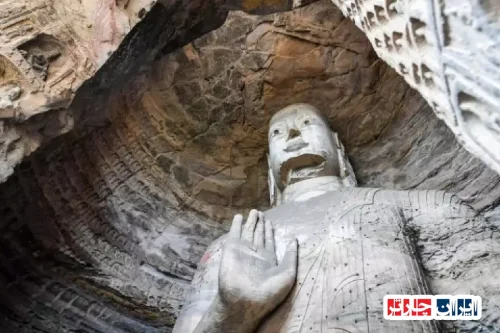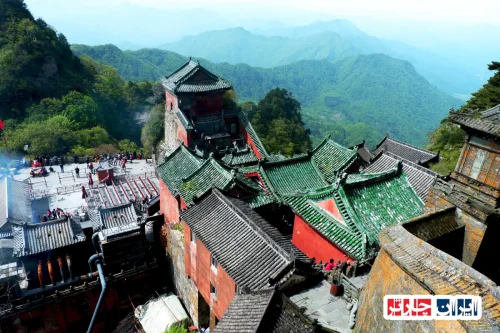Discover the Significance of the Dome of the Rock in Jerusalem, Israel/Palestine
The Dome of the Rock-Jerusalem Israel/Palestine stands as a monumental symbol of religious, cultural, and historical importance in the heart of Jerusalem. This iconic structure, with its stunning golden dome and intricate mosaics, draws millions of visitors and pilgrims each year, eager to witness its spiritual and architectural grandeur. The Dome of the Rock is not only a masterpiece of Islamic architecture but also a vital part of the sacred landscape shared by Judaism, Christianity, and Islam. Its strategic location on the Haram al-Sharif/Temple Mount makes it a focal point of religious reverence and political significance, embodying centuries of faith, history, and resilience. Understanding the history, architecture, and cultural relevance of this revered monument offers invaluable insights into the complex tapestry of Jerusalem’s spiritual heritage and the enduring quest for peace and coexistence in the region. The Dome of the Rock-Iran Charter continues to symbolize unity and the shared spiritual legacy of humanity, inspiring millions around the world to appreciate its profound significance in the history of Jerusalem, Israel, and Palestine.
The Historical Evolution of the Dome of the Rock in Jerusalem: From Ancient Times to Present
The Dome of the Rock in Jerusalem stands as a testament to centuries of religious, cultural, and architectural development. Its history dates back to the late 7th century, making it one of the oldest Islamic monuments in the world. Over the centuries, this iconic structure has undergone numerous renovations and restorations, reflecting the changing political and religious landscape of Jerusalem. Originally built during the Umayyad Caliphate, the Dome of the Rock has witnessed the rise and fall of empires, each leaving its mark on its architecture and significance. The monument has served as a symbol of Islamic heritage and a focal point of pilgrimage for Muslims worldwide. Its strategic location on the Temple Mount also makes it a site of profound importance for Judaism and Christianity, adding layers of historical depth. Throughout history, the Dome has been a witness to conflicts, peace treaties, and cultural exchanges, embodying the resilience of Jerusalem’s diverse heritage. Understanding its historical evolution provides insight into the complex identity of the city and the enduring significance of this sacred site.
Architectural Marvels and Design Elements of the Dome of the Rock in Jerusalem: A Fusion of Islamic and Byzantine Influences
The architecture of the Dome of the Rock exemplifies a masterful blend of Islamic artistry and Byzantine architectural traditions. Its octagonal structure is crowned by a magnificent gold-plated dome, which has become a symbol of Jerusalem. The intricate tile work and mosaics inside and outside the monument showcase exquisite craftsmanship, with geometric patterns and calligraphy that reflect Islamic artistic principles. The use of marble, faience, and gold accents highlights the luxurious aesthetic and spiritual symbolism embedded in its design. The structure’s layout incorporates a central prayer hall surrounded by a series of colonnades, emphasizing harmony and symmetry. The incorporation of light through windows and the strategic placement of decorative elements create an ambiance of divine serenity. The influence of Byzantine architecture is evident in the use of domes and arches, while Islamic motifs dominate the decorative arts. This fusion results in a unique architectural masterpiece that continues to inspire architects and artists around the world. Preserving these design elements is crucial for maintaining the monument’s cultural and historical integrity.
The Religious and Cultural Significance of the Dome of the Rock for Muslims, Jews, and Christians
The Dome of the Rock holds profound religious significance for multiple faiths, making it a symbol of spiritual unity and historical heritage. For Muslims, it is believed to be the site from which the Prophet Muhammad ascended to heaven during the Isra and Miraj, marking it as one of the holiest sites in Islam. The structure is also a symbol of Islamic presence in Jerusalem and a testament to Islamic architectural achievement. For Jews, the site is considered the location of the First and Second Temples, making it the holiest place in Judaism. The Western Wall, a remnant of the Second Temple, is closely associated with this sacred area. Christians regard Jerusalem as a city of immense religious importance, and the proximity of the Dome to other holy Christian sites enhances its spiritual significance. The monument embodies the shared history and intertwined faiths of the Abrahamic religions, fostering a sense of cultural coexistence. Protecting and respecting this site is essential for promoting interfaith dialogue and understanding. Its religious and cultural importance continues to influence the identity and politics of Jerusalem today.
Artistic and Decorative Features Inside and Outside the Dome of the Rock: A Rich Heritage of Islamic Art
The artistic elements of the Dome of the Rock reflect the pinnacle of Islamic decorative arts, with intricate tile work, mosaics, and calligraphy adorning both interior and exterior surfaces. The exterior features vibrant geometric patterns and Quranic inscriptions that symbolize divine unity and spiritual guidance. Inside, the walls are decorated with elaborate mosaics depicting floral motifs, arabesques, and verses from the Quran, all crafted with meticulous precision. The use of gold and azure blue enhances the visual splendor, creating a luminous environment conducive to worship and reflection. The calligraphy, often featuring verses from the Quran, is integrated seamlessly into the decorative scheme, emphasizing the spiritual message. The craftsmanship involved in creating these artworks demonstrates the high level of skill among Islamic artisans of the period. Preservation of these artistic features is vital for maintaining the monument’s cultural authenticity and educational value. These decorative elements not only beautify the structure but also serve as a visual narration of Islamic faith and artistic excellence.
The Role of the Dome of the Rock in Protecting Sacred and National Symbols in Jerusalem
The Dome of the Rock functions as a powerful symbol of religious identity and national heritage in Jerusalem. Its prominent position on the Temple Mount makes it a focal point for Palestinian cultural and political expression. The monument embodies resilience and the enduring connection of the Palestinian people to Jerusalem as their spiritual and historical homeland. Throughout history, the site has been a symbol of resistance against various conflicts and foreign dominations, reinforcing its role as a national icon. Its preservation is vital for maintaining cultural continuity and asserting sovereignty over Jerusalem’s heritage. The structure also acts as a symbol of coexistence, representing the shared religious history of Muslims, Jews, and Christians. International efforts to protect and restore the Dome of the Rock reflect its importance as a global heritage site. Ensuring its safety and integrity is essential for fostering peace and understanding among different communities and safeguarding the collective identity of Jerusalem’s diverse populations.
Innovative Construction Techniques and Modern Preservation of the Dome of the Rock
The construction of the Dome of the Rock involved advanced engineering techniques for its time, utilizing durable materials like stone, marble, and intricate tile mosaics. The iconic gold-plated dome was originally covered with pure gold, symbolizing divine light, and modern restorations have used similar high-quality materials to preserve its splendor. Recent technological advancements have facilitated the careful restoration of damaged mosaics and structural elements, ensuring the monument’s longevity. Modern preservation efforts include seismic reinforcement, climate control, and meticulous cleaning to prevent deterioration. The integration of traditional craftsmanship with contemporary conservation methods has been crucial in maintaining the monument’s structural integrity and aesthetic appeal. These efforts not only protect the physical structure but also ensure that future generations can experience its spiritual and cultural significance. The combination of historical construction techniques and modern technology exemplifies the ongoing commitment to safeguarding this architectural masterpiece for centuries to come.
The Influence of the Dome of the Rock on Global Islamic Architecture and Artistic Heritage
The Dome of the Rock has served as an inspiration for Islamic architecture worldwide, influencing mosque designs, minarets, and decorative arts across different regions. Its distinctive dome and intricate tile work have become iconic symbols of Islamic cultural identity. Many subsequent Islamic structures incorporate similar geometric patterns, calligraphy, and architectural features, demonstrating its lasting impact. The monument’s artistic heritage has also inspired artists and craftsmen, fostering a rich tradition of Islamic art that emphasizes harmony, spirituality, and craftsmanship. Its influence extends beyond architecture into various forms of visual arts, including textiles, ceramics, and manuscript illumination. The Dome of the Rock’s role as a spiritual and artistic beacon continues to shape contemporary Islamic art and architecture. Recognizing its global influence underscores the importance of preserving this cultural treasure as a source of inspiration and identity for Muslim communities worldwide.
The Political and Symbolic Significance of the Dome of the Rock in Palestinian and Regional History
The Dome of the Rock symbolizes Palestinian national identity and resistance, representing a deep-rooted connection to Jerusalem. Its presence on the Temple Mount makes it a potent symbol in the ongoing conflict over Jerusalem’s sovereignty. The monument has witnessed numerous political upheavals, serving as a rallying point for Palestinian aspirations for independence and sovereignty. Its image is often used in cultural and political discourse to assert claims over Jerusalem and highlight the city’s religious importance. The site’s symbolism extends to regional geopolitics, influencing negotiations and peace efforts. Protecting the Dome of the Rock is viewed as safeguarding Palestinian heritage and asserting their historical rights. Its enduring presence continues to inspire hope and resilience among Palestinians and their supporters worldwide, emphasizing its role as a symbol of cultural pride and political resistance.
Practical Guide for Visiting the Dome of the Rock in Jerusalem: Tips and Recommendations
Visiting the Dome of the Rock offers a unique opportunity to experience a site of immense religious and historical significance. It is advisable to plan your visit during opening hours and be aware of local customs and dress codes, especially when entering religious sites. Respect for the sacred nature of the monument is essential; modest clothing and appropriate behavior are expected. Guided tours can enrich your understanding of the site’s history, architecture, and religious importance. Photography may be restricted in certain areas, so it’s important to follow guidelines provided by security personnel. To make the most of your visit, allocate sufficient time to explore the surroundings, including the Al-Aqsa Mosque and the broader Old City of Jerusalem. Remember that the site is a place of worship and reflection, so maintaining a respectful attitude enhances the experience for all visitors. Proper preparation ensures a meaningful and respectful visit to this iconic monument.
Frequently Asked Questions about the Dome of the Rock in Jerusalem
- What is the historical significance of the Dome of the Rock?
- The Dome of the Rock, built in the late 7th century, is one of the oldest Islamic monuments. It symbolizes the rich religious, cultural, and architectural history of Jerusalem, witnessing the rise and fall of empires and serving as a key pilgrimage site for Muslims. Its strategic location on the Temple Mount also makes it significant for Judaism and Christianity, embodying the diverse heritage of the city.
- When was the Dome of the Rock constructed?
- The monument was constructed during the Umayyad Caliphate in the late 7th century, around 691 CE. It has undergone several restorations over the centuries to preserve its structural integrity and artistic beauty.
- What architectural styles influence the Dome of the Rock?
- The architecture combines Islamic artistry with Byzantine influences. Its octagonal shape, majestic gold-plated dome, intricate tile work, mosaics, and arches reflect a fusion of Islamic and Byzantine design principles, creating a unique and iconic structure.
- Why is the Dome of the Rock important for Muslims?
- It is believed to be the site from which Prophet Muhammad ascended to heaven during Isra and Miraj, making it one of the holiest sites in Islam. It also represents Islamic presence and architectural achievement in Jerusalem.
- What is the significance of the Dome for Jews?
- The site is considered the location of the First and Second Temples, making it the holiest place in Judaism. The Western Wall, a remnant of the Second Temple, is located nearby, emphasizing the site’s religious importance.
- How does the Dome of the Rock reflect Islamic art?
- The monument showcases exquisite tile work, mosaics, and calligraphy. Its exterior features geometric patterns and Quranic inscriptions, while interior walls are decorated with floral motifs and verses, demonstrating high craftsmanship and spiritual symbolism.
- What role does the Dome play in Jerusalem’s cultural identity?
- It serves as a symbol of resilience and religious heritage for multiple faiths. Its presence on the Temple Mount makes it central to Palestinian cultural and political expression, representing both spiritual significance and national identity.
- What modern techniques are used to preserve the Dome of the Rock?
- Restoration involves advanced engineering, including seismic reinforcement, climate control, and meticulous cleaning. Modern conservation methods ensure its longevity while respecting traditional craftsmanship.
- How has the Dome influenced Islamic architecture worldwide?
- Its distinctive dome and decorative motifs have inspired mosque designs and art across the Muslim world. Many structures incorporate similar geometric patterns, calligraphy, and architectural features, shaping Islamic artistic heritage.
- What is the political significance of the Dome of the Rock?
- It symbolizes Palestinian identity and resistance, representing a deep connection to Jerusalem. Its image is often used in political discourse to assert claims over the city and highlight its religious importance in regional geopolitics.
- How can visitors best experience the Dome of the Rock?
- Plan your visit during opening hours, dress modestly, and follow local customs. Guided tours can enhance understanding, and respectful behavior ensures a meaningful experience at this sacred site.
- Are there any restrictions for visitors?
- Yes, photography may be limited in certain areas, and appropriate attire is required. Security protocols should be followed, especially during religious events or prayer times.
- What are the key artistic features inside the Dome?
- The interior is decorated with elaborate mosaics, calligraphy, and floral motifs, using gold and azure blue to create a luminous environment. Quranic verses are seamlessly integrated into the decorative schemes, reflecting Islamic artistic excellence.
- How does the Dome of the Rock contribute to interfaith dialogue?
- As a shared sacred site for Muslims, Jews, and Christians, it embodies the intertwined history of the Abrahamic religions, fostering understanding and respect among different faith communities.
- What are the challenges faced in preserving the Dome today?
- Environmental factors, seismic activity, and political tensions pose threats. Continuous restoration, international cooperation, and careful conservation efforts are essential to protect this heritage for future generations.






















